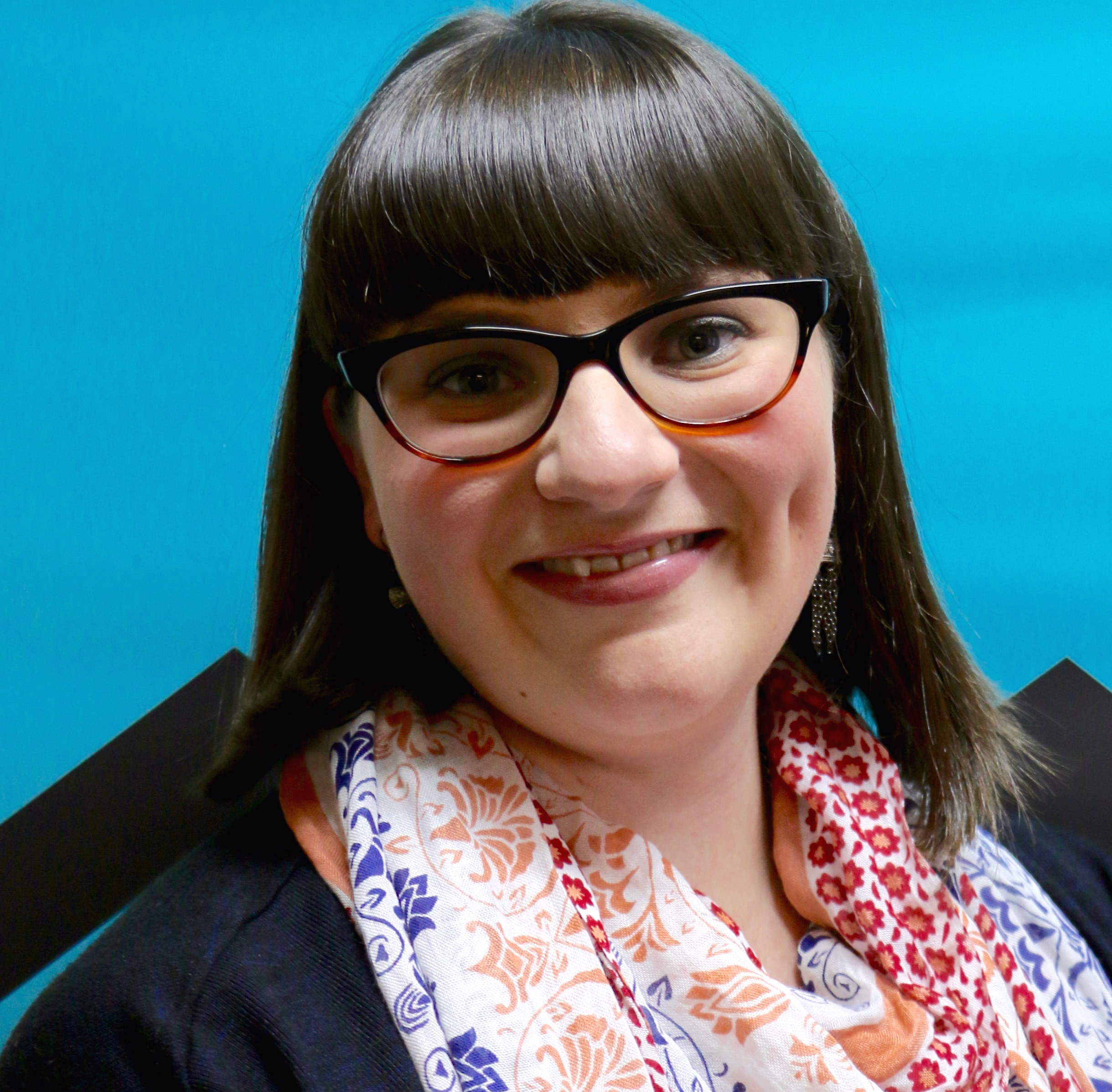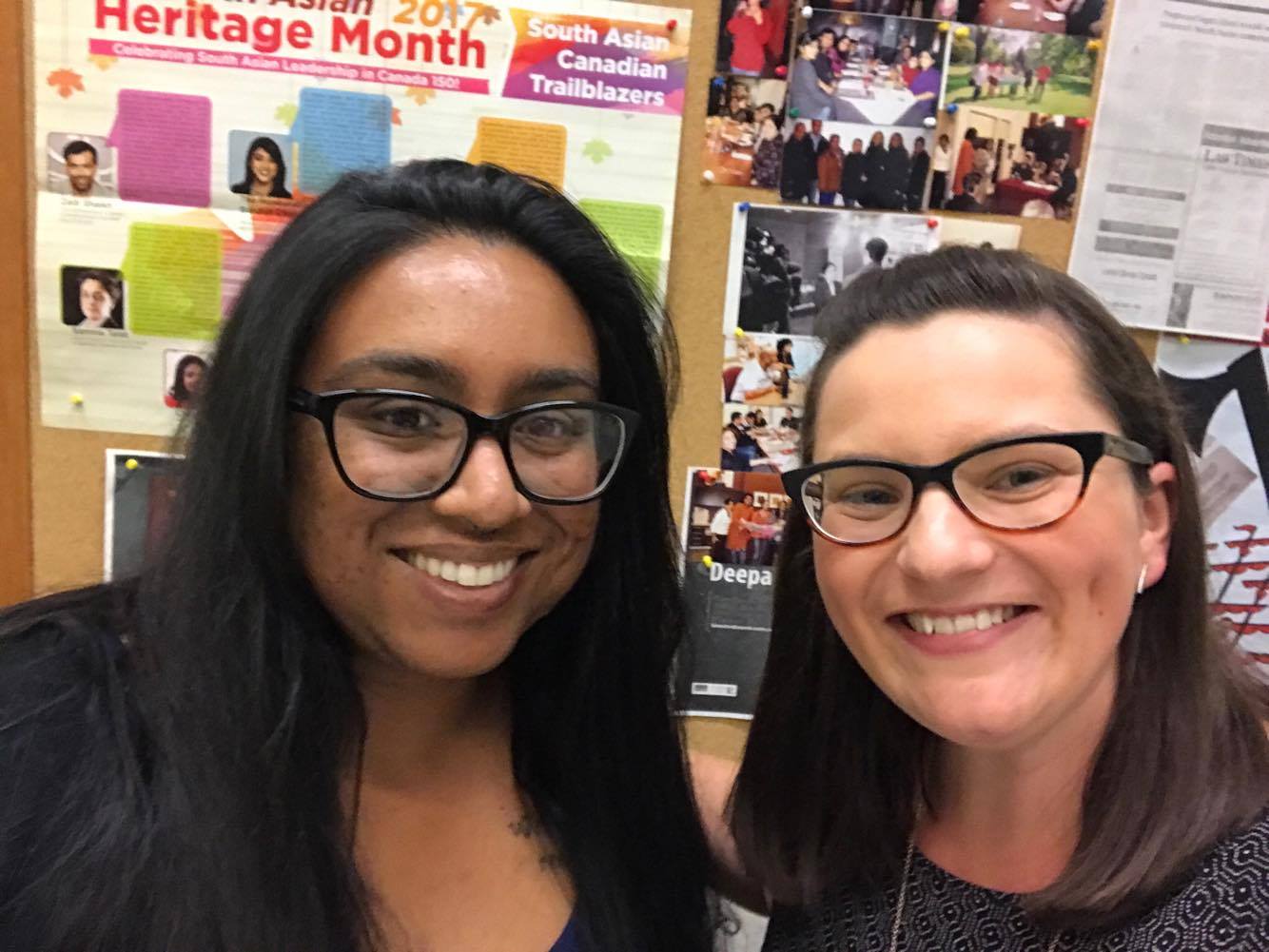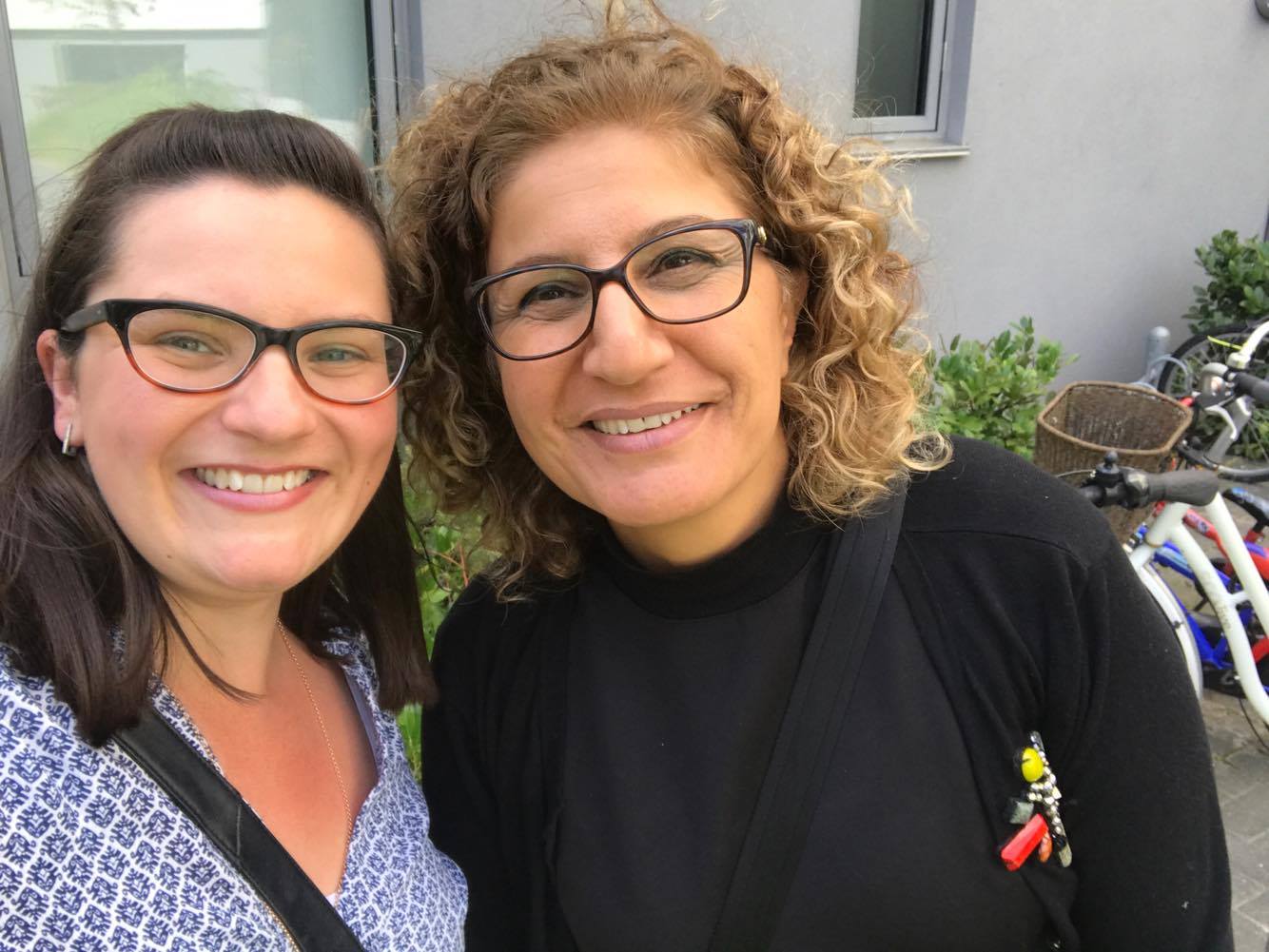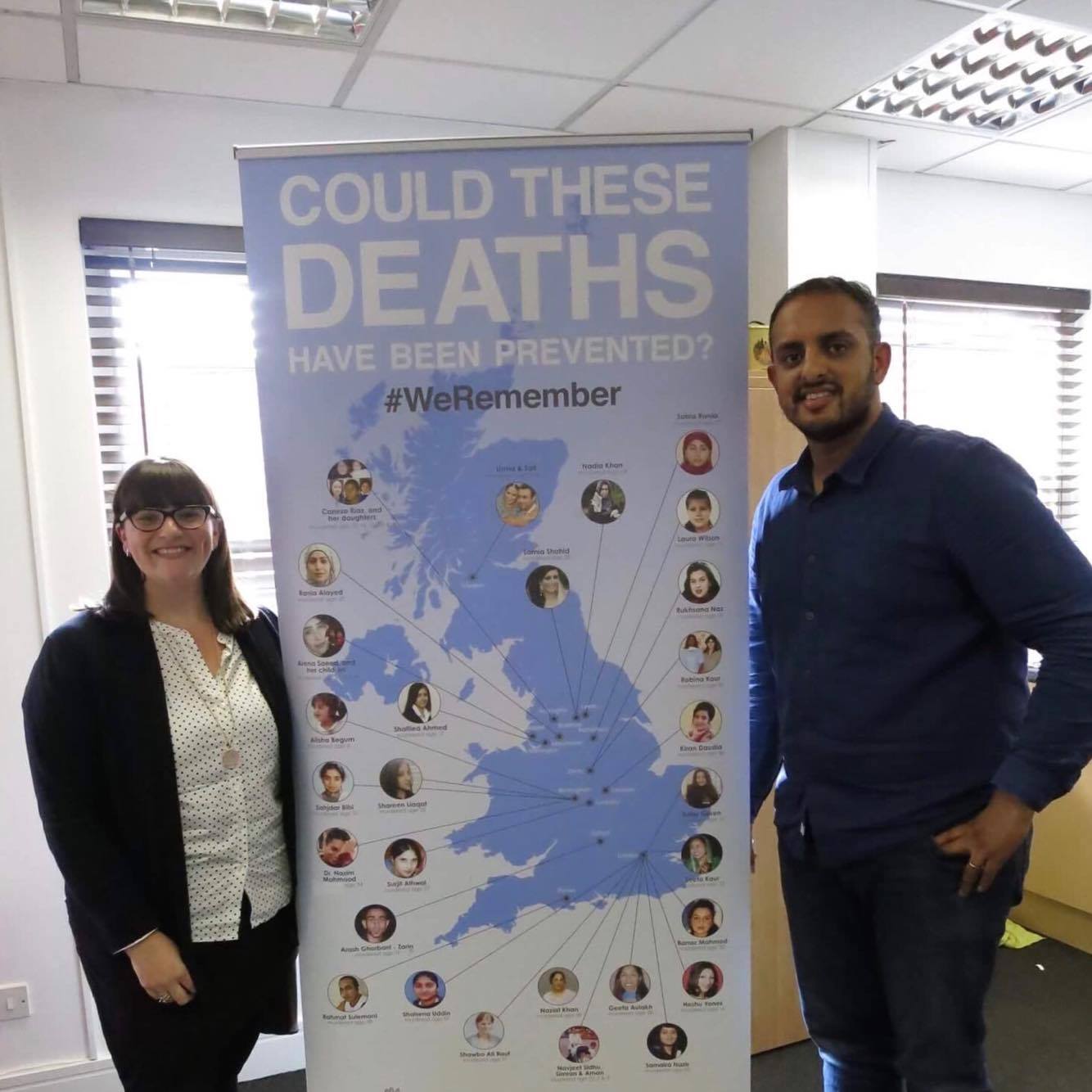A Winston Churchill Memorial Trust Fellow is Not Afraid to Do the Right Thing to Combat Forced Marriage

Laura Vidal, Winston Churchill Memorial Trust Fellow
Laura Vidal is a Social Worker with a Masters in Human Rights Law and Policy from Sydney, Australia. Since 2010, Laura has worked in a dedicated way to address the issue of human trafficking and slavery in Australia and abroad. In 2013, when Australia criminalized forced marriage as a form of slavery, Laura stepped up as a leader of this work, advocating for adequate policies and frameworks to be put in place to best support individuals impacted by forced marriage. In 2016, Laura was awarded a Winston Churchill Memorial Trust Fellowship to engage in multi-country field research on early and forced marriage, with the aim of enhancing practice in Australia, on both a practical and policy level. Laura is a practitioner and trainer and regularly contributes to government and civil society policy discussions.
AHA Foundation: Tell us about the project that you are working on for your Churchill Fellowship.
Laura Vidal: My project is centered on three key goals. The first is about understanding marriage. Australia has a unique context, probably similar to the United States and also places like Canada and the United Kingdom, where the primary populations that are most affected by early and forced marriages are migrant populations. We see the dynamic of 15-17 year olds who were born and raised in Australia, then taken overseas to be married in order to bring over a spouse, for financial gain, traditional practices, or for upholding cultural or religious expectations. These young people in many ways are living in two different worlds: they have their world at home and their world at school. Often the values in these different worlds clash. The adolescents may start to resist the marriage that is being proposed.
For me, I felt that there was a gross misunderstanding amongst Australian policymakers and service providers around the actual practice of marriage. In that, in many cultures, often non-Western cultures, marriage does not happen the same way or mean the same thing. Particularly in collectivist societies where individual decision making is against the norm, when you say no to a marriage, you are saying no to a whole ricochet effect of what happens in the community when that happens. So, I really wanted to take the opportunity to understand marriage and the role that it plays in social and family structures around the world.
“…the Australian government has been very tough in their messaging against forced marriages, this is positive but cannot stand alone; this approach alone is not going to proactively engage a community to change their behavior.”
The second part of my project is a comparative analysis on legislative and non-legislative approaches. We may have a law in Australia against forced marriages, but you cannot expect this to make the issue go away. That has been problematic because the Australian government has been very tough in their messaging against forced marriages, this is positive but cannot stand alone; this approach alone is not going to proactively engage a community to change their behavior. It is an approach that makes the practice go further underground, demonizes communities, and does not give incentives for people to change.
“When did making something illegal mean that people stop doing it? Never.”
I certainly do not want to come across as someone who is not in support of criminalization because I absolutely think having the legal framework is necessary and it is particularly useful to be able to use it as a backbone, but my point is that it cannot be done in isolation. You cannot develop a law, roll it out, and expect that people are going to change overnight. When did making something illegal mean that people stop doing it? Never.
For me, I thought that there was a serious gap between generating legislation and not resourcing all of the parallel processes that go to community partnership and engagement. I have been looking at how various different Western countries, with similar populations as those living in Australia, experience this issue and develop legislation around it and complement it with programmatic responses that encourage behavior change and support individuals at risk.
The third part of my project is focused on victim support. At the base of my work is actually direct victim work. I am a social worker by training and I have been supporting victims of slavery and human trafficking for almost ten years, with a growing focus on early and forced marriage survivors in the last three to four years. The emphasis on support is really around challenging how we deliver programs to our client group and asking those critical questions of whether or not we are doing this in the way that it needs to be done or in the way that is most effective. There is a significant, glaring problem in that our official support program requires engaging with the police. In our experience, 16-18-year olds are very reluctant to engage in the criminal justice process and this should not disqualify them from support. There has been some acknowledgement in the last few years that this program is not as effective as it could be and there has been exploration into what programs would be better.
“…we are essentially just doing crisis management one case at a time instead of being engaged in systemic, behavior change.”
There are so many layers involved that the Australian service provider community has not tapped into. It is a child protection concern, but we are getting various responses by child protective agencies on what their responsibilities or responses are. It crosses over into gender-based and family violence frameworks. It then generates things like youth at risk of homelessness because people are leaving their homes. This then creates vulnerability to other kinds of exploitation because when young people are alone and isolated, not feeling safe, they look for that safety and security in other places. There is a ricochet effect of not having effective structures and frameworks in place.
My third component is really about the generation of an effective support model which has both community support and government agency level buy-in. This will establish a more robust and holistic program that prevents forced marriage on a case-by-case basis, but also looks at other factors, such as siblings in the household and a more intergenerational approach. What we do now is intervene in one single person in isolation, but we know that these situations do not happen in isolation, so we are essentially just doing crisis management one case at a time instead of being engaged in systemic, behavior change.
AHA Foundation: Where is your project taking place and who did you meet throughout the trip? What have you learned from these meetings?
Laura Vidal: The project has been focused in six countries. I started in July in Sri Lanka. Then I went to the United Kingdom, Denmark, United States, Canada, and Kenya. I was in each place around two weeks, with the exception of Denmark and Sri Lanka, which were one week.
I met with a combination of different people in each place: non-governmental organizations (NGO’s), international NGO’s, governments, and survivors. The project is really looking at this issue from many perspectives. In every place that you go, each of these stakeholders have different perspectives from each other. Kenya, in particular, has been very interesting in that way, where organizations like UNICEF, for example, have completely different perspectives to NGO’s working on the ground.
There is a huge disconnect when it comes to effective intervention, which can actually be applied in context like Australia and the United States. I think it is really amplified in the developing world, but the subtleties around how things are funded or resources, actually drive a huge amount of influence in the Western world as well. So, when we think about introducing effective interventions, we cannot just think about what are the best practices, we also have to consider the social and political feasibility of making these recommendations happen.
“There is some great learning that can come out of some of the smaller initiatives”
Some of the grassroots interventions are very inspiring. They are doing the hard slog, and they are the ones actually doing the innovation because they have to be innovative, in terms of their resources and scope. It has been really great to be able to see some smaller projects as well because there is some great learning that can come out of some of the smaller initiatives that actually don’t have the resources to work in any other way.
“There is no stake in (this project) for anyone so people are being really open with me, which I really appreciated.”
It has been very interesting meeting with a diversity of stakeholders in each country and to be able to compare and contrast perspectives based on the positions that they hold within society and the level at which they are working at. That has been a real bonus of this trip. I can read all I want on the internet, but when you do an internet-based research project, you don’t really get the opportunity to understand and learn what is happening on the ground. This has been a real honest project. I feel that people have been very honest with me. There is no stake in it for anyone so people are being really open with me, which I really appreciated.
AHA Foundation: Why did you choose Sri Lanka and Kenya?
Laura Vidal: I chose those two places for a couple of reasons. Sri Lanka was for a South-Asian perspective and at the Salvation Army, we had cases from Sri Lanka. I thought that would work well because we actually work with people from that community in Australia. The focus there was on the marriage piece. I didn’t focus a lot on forced married in Sri Lanka, more on marriage itself.
And Kenya is an East African country and we have a large East African population in Australia. It has a significant rate of child marriage, both in the country and outside of the country. There are a large number of NGO’s that work in Kenya: Plan International, UNICEF, World Vision, all the folks are here. I wanted to understand influences that the international organizations have on policy and what that looks like for NGO’s.
Another reason that I picked Kenya was to look at community engagement projects. Africa, as a continent but particularly East Africa, has really great models of community dialogue. Many communities in East Africa use dialogue to solve problems. I wanted to learn about those projects, where there is partnership within all levels of a community including children, men, women, village chiefs, and more. East African communities are often centered around community engagement and dialogue.
“…we can’t ignore the fact that some people, based on their migration experience, see the world differently, feel the world differently, and actually communicate in completely different ways.”
I think there is a lot that the Western world can learn from that dialogue process, particularly when we have such diverse populations who relate to the world in different ways. We can’t just ignore this fact because we want everyone to integrate.
Yes, there are basic principles of integration and absorbing community values which help a society thrive, but we can’t ignore the fact that some people, based on their migration experience, see the world differently, feel the world differently, and actually communicate in completely different ways.
We cannot just turn the switch off and say we are going to ignore it because it doesn’t work for us and we are going to impose our ways for doing things on everyone. I am certainly not suggesting that a law, like ending forced marriage, isn’t an important thing to have, but how we then work with the community around implementing that standard is vital. We need to meet them where they are at and work up from there. I think models that are employed by some of these international and grassroots NGO’s around community education and dialogue are important and have significant benefits to a potential community engagement strategy in a place like Australia.

Laura Vidal meets with Ms. Aruna Boodram of the South Asian Legal Clinic of Ontario, who are providing wrap around legal and social support to individuals at risk of forced marriage.
“People always want to be able to point out who is the problem, but we steer away from that conversation because we do not think that it is helpful to continue to demonize communities when we actually want to partner with them and empower them.”
AHA Foundation: What populations in Australia do you see being affected by forced and early marriage?
Laura Vidal: Australia has an incredibly diverse migrant population. We are one of the most multicultural societies in the world. We see people from Asia, the Middle East, Africa, even Australians themselves. We try to not be too specific in our representation of the issue. We do genuinely have an experience with great diversity in geographic, religious, and cultural backgrounds. People always want to be able to point out who is the problem, but we steer away from that conversation because we do not think that it is helpful to continue to demonize communities when we actually want to partner with them and empower. For example, education about rights and women’s empowerment does not happen when you go into a community and say the reason why this happens is because you are from this background.
AHA Foundation: In a previous article, you stated that “the size and scale of early and forced marriage in Australia has significantly increased since it was criminalised in 2013.” Do you believe that this is a result of an increase in the actual size and scale of early and forced marriages or because of better resources devoted to this issue?
Laura Vidal: It is not necessarily about early and forced marriage increasing in Australia. It is really about the growing resources and awareness available for people to seek help or to report. We would say the same about trafficking and slavery or other issues; when you start to give it attention, you of course find things that have been there but no one had ever paid attention to. It is more about the recognition of the issue as opposed to the growing rates of the problem.
AHA Foundation: How will you be analyzing your results and what form will your final report be in?
Laura Vidal: Today I had my 42nd meeting and tomorrow I have two more and then I am done. The one good thing that I have observed is that there is a lot of consistency from the places that I’ve been. That is a real positive because it has generated some really clear trends. While I feel like sometimes I am having repetitious conversations, they have held significant value because it is not just one person saying the same thing. When you have 40 people saying the same thing in six countries, people are going to listen.
“It is pretty scary because some of these ideas that I have might be a little unpopular.”
The analysis of results will be a manual process that I will be conducting. I will be generating a report for the Churchill Trust and the real meat of the work is around the recommendations and the strategic advocacy plan for how I would like to engage the Australian community at all levels around implementation for some of these recommendations.
“What is right might be overwhelming, but don’t be fearful of doing something that is unpopular.”
It is pretty scary because some of these ideas that I have might be a little unpopular. The politics in how things have unfolded in Australia makes me feel a bit apprehensive. But I think that yes, it might be unpopular, but I firmly believe that some of these observations that I’ve made are completely vital introductions into our framework and somebody has to be prepared to fight for it. I would say that what is right might be overwhelming, but don’t be fearful of doing something that is unpopular. If you have evidence to suggest that something is effective, just because it might be unpopular, don’t back away.
We are advocates, activists, social workers, lawyers, and all of these different types of people doing this work and we cannot forget why we are doing this work and who the people are at the end of this road. Engaging survivors in the advocacy to help them own their journey to change is also critically important. I can talk forever about certain things, but those things have been someone’s life. I think that we have to always stay grounded in this work and who the people are we are doing this for. We need to invite them to partner with us. There is this whole school of thought on “not about me, without me.” This really speaks to the idea of, who are we to be continuing to have these conversations and make these changes without the people who are most affected.
“Survivors are an expert in their own lives; they aren’t necessarily legal or policy experts but it is about the partnership involved and you need to do it with humility and not with entitlement.”

Laura Vidal learning about Denmark’s integrated approach involving families, with Ms. Farwha Nielsen
Everyone’s an expert at something. Survivors are an expert in their own lives; they aren’t necessarily legal or policy experts but it is about the partnership involved and you need to do it with humility and not with entitlement. There is a real sense of pride from a lot of organizations working on this issue, and there should be because people are doing amazing things. I would like to see our strategy in Australia being really grounded in a human rights perspective. One that really echoes the voices of survivors and demonstrates best practices. There are people doing best practice in little pockets all over the world and we need to not be too proud to change how we do things and to challenge how we do things. We should not be afraid to do something that is unpopular.


